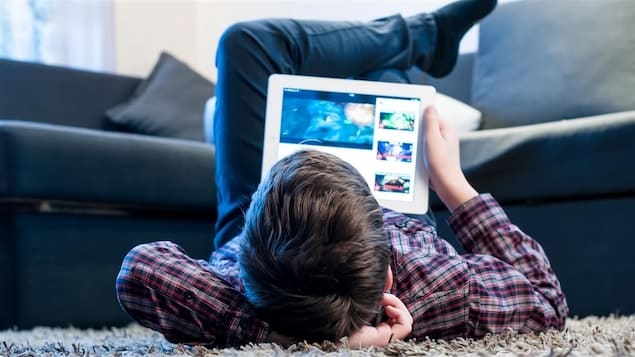This is revealed by a study by the Montreal Regional Public Health Department (DRSP) carried out in April and May 2021 among 725 adolescents and published on Wednesday.
Of this sample of young people between the ages of 13 and 17, seven out of ten say they have greatly increased at least one type of screen use, whether video, social networks or video games. One in four even say they have greatly increased three or more types of use.
During the first year of the pandemic, almost half of them (44%) spent more than four hours a day in front of a screen on weekdays. This excludes screen time for school and schoolwork.
At the same time, the majority of young people surveyed (more than 50%) saw their academic motivation and the number of hours dedicated to physical activity decrease during the first year of the pandemic.
If several factors come into play, including the various health restrictions to fight against COVID-19 (curfew, school at home, contacts restricted to the family bubble), it seems despite everything that the intensive use of screens (5 hours and more per day) has a considerable impact on several variables of well-being and health.
That is to say that young people who devote 5 hours or more to it per day seem to be more affected than the others.
Young people themselves make the connection between changes in their lives and increased use of screens. However, some impacts are positive.
For example, the use of screens allowed them to learn new things or stay in touch with loved ones, while contact was limited during the first year of the pandemic.
On the other hand, many also admit that it has affected their sleep and their school results.
The increase reached a point where almost 40% of them even said tanned
of their screens.
Again, most of these impacts are felt considerably more among young people who spend 5+ hours a day in front of screens.
The specific context of the pandemic
the DRSPresponsible for the study, however, wishes to recall the particular context in which the study was conducted, namely during the third wave of COVID-19 in Quebec, when the Montreal population was subject to a curfew, that the school was done at home and that social social contacts were restricted to the family bubble.
Not only “the absence of alternatives and spaces for face-to-face interaction encourages […] increased use of screens”, but “the restrictive context of the pandemic generates […] unusual stress in the adolescent population”.
“Our data somehow reflects the strong influence of this context on digital habits,” reads the report. We propose to take a nuanced look at the results since the normal processes of adaptation in times of crisis are sometimes accompanied by psychological distress or anxiety, without these representing a clinical mental health disorder. »
the DRSP also points out that the only causal links that can emerge from the study are those self-reported by young people, such as lack of sleep and negative impacts on school results.
Use “for want of anything better” screens
Moreover, the authors of the study consider the fact that 37% of young people are “tanned” from their screens to be significant. “This data is interesting and suggests that for many, the return to activities and in-person meetings could possibly lead to a reduction in screen time.
” In fact, it appears that for some, the more frequent use of screens during the pandemic is sometimes done for lack of anything better. »
Thus, the study does not necessarily allow conclusions to be drawn about the long-term use of screens among young people.
However, it allows this: “From a public health perspective, the results support the idea of considering behaviors related to information and communication technologies as a determinant of population health”.
Reference-ici.radio-canada.ca
